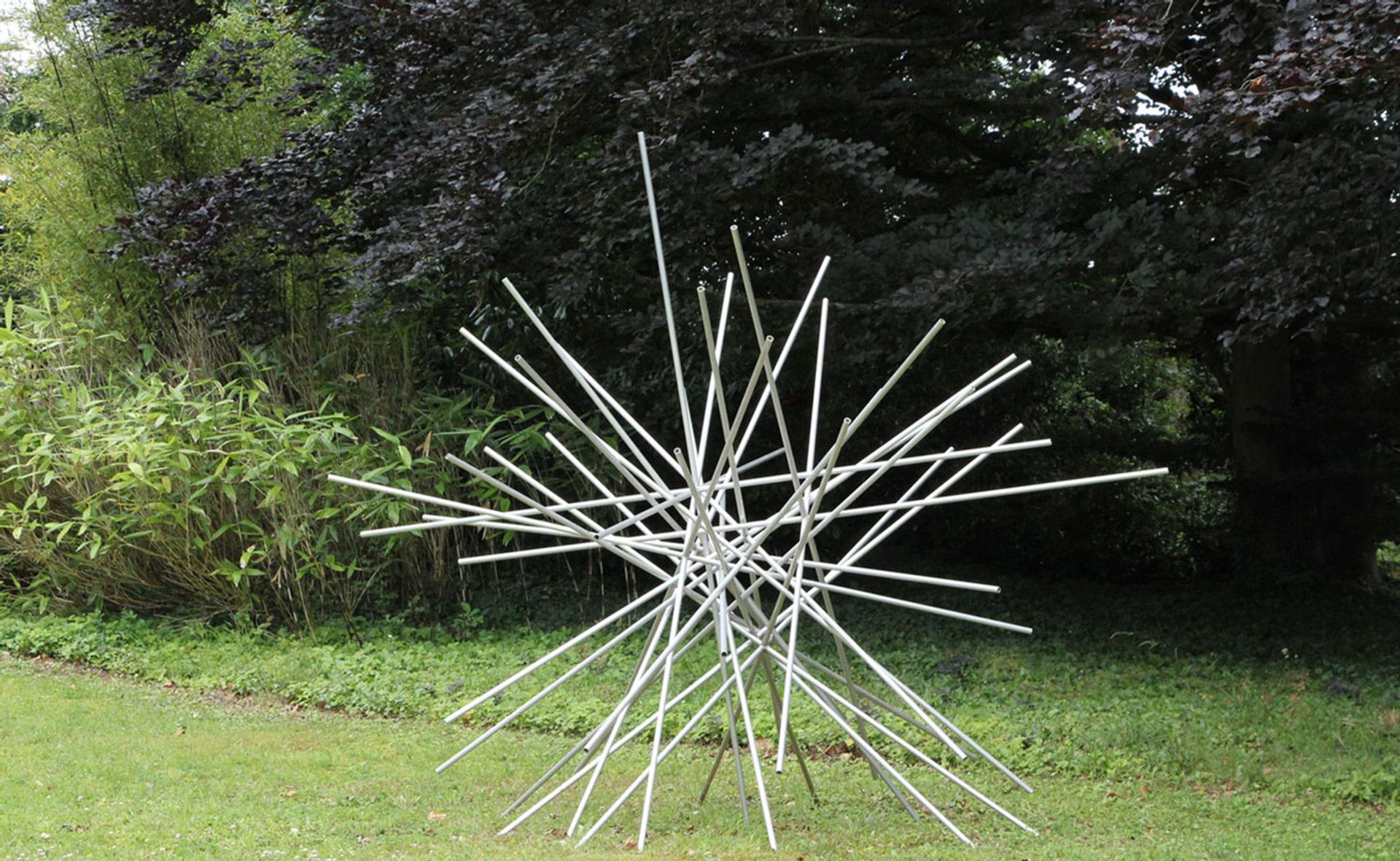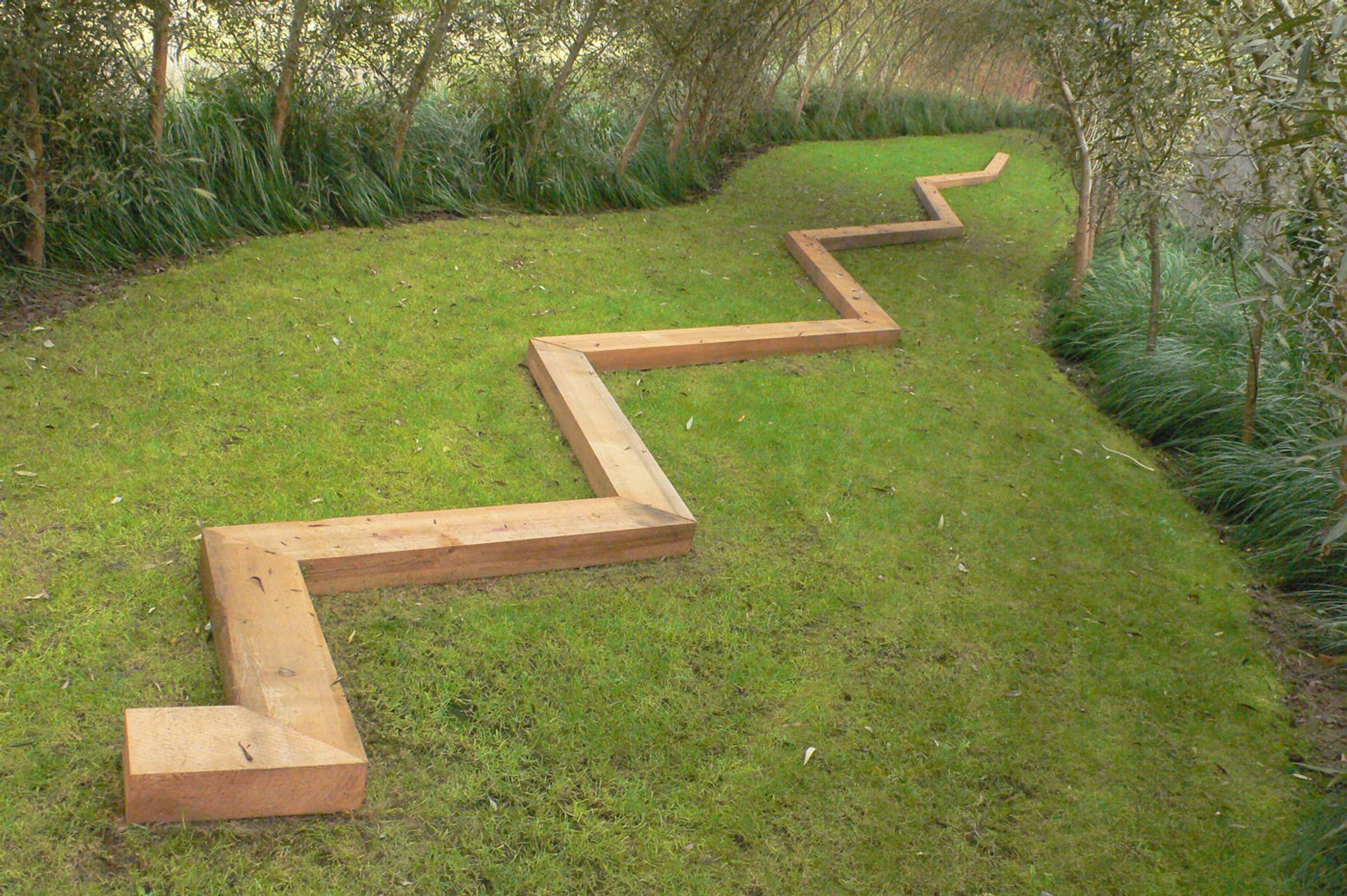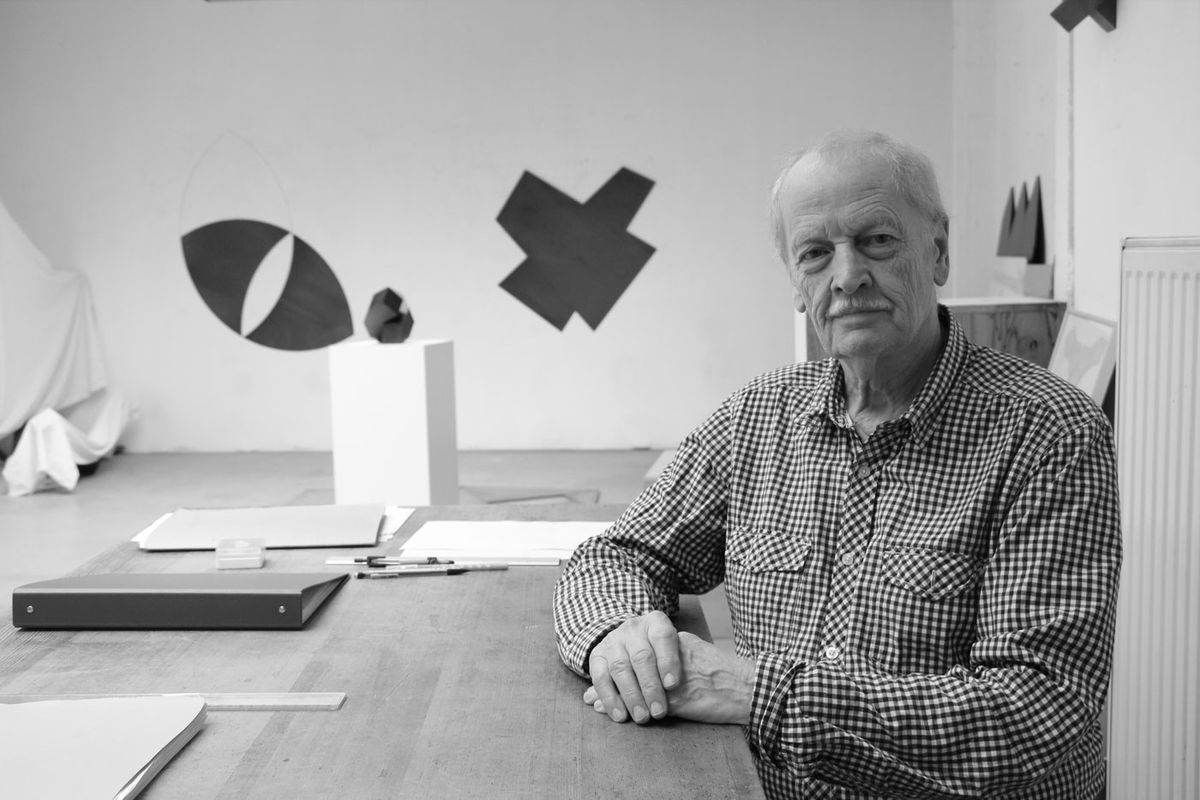In November 2019, Norman Dilworth was awarded the Peter C. Ruppert Prize for Concrete Art in Europe, a prize that was established in 2008 and is announced every three years at the Museum im Kulturspeicher Würzburg, in northern Bavaria. At eighty-eight years of age, Dilworth became the first British-born artist to be given this award. It was a fitting tribute to a man who had not only spent his life actively engaging with Concrete Art and the developing tendencies of the modern movement in Europe more generally, but also living there with his wife, the photographer Christine Cadin, and their sons Christophe and Matthew—first in Amsterdam from 1982 to 2002, and then in Lille until his death. For Dilworth was very much a European as well as a British artist.
Dilworth was born into a Catholic family in Wigan on 12 January 1931. He enjoyed the numerical poetry of his birthdate—"12131"—and used it in the title of Norman Dilworth 12131 (2001), a study of his life and work co-edited with the curator Cees de Boer. After studying at Wigan School of Art (1949-52), Dilworth attended the Slade School of Art, in London (1952-56), winning the Tonks Prize in 1955 and also the Sunday Times Drawing Prize in 1956. This was followed by a one-year scholarship funded by the French Government to study in Paris, where he often visited Alberto Giacometti in his studio. Paris opened his eyes to life beyond the art school and beyond Britain, as it had many others before him, fuelling his ambition to become an artist.
The 1960s and 1970s saw Dilworth establish his construction-based approach to art making. He made reliefs and sculptures that were geometrical, rectilinear, orthogonal, non-mimetic and built on numerical relationships within and between works. Some were wall-bound and others freestanding. His work was inspired by the Paris-based collaborative artists of the Groupe de Recherche d’Art Visuel and their interest in process and open, non-specific works. He was also drawn to the exhibitions staged at the Signals Gallery in London, where he was introduced to South American artists such as Lygia Clark, Mira Schendel and Hélio Oiticica.
Like many British artists making abstract, constructed art at this time he often found a more sympathetic reception to his work abroad
Dilworth began showing his works in a number of constructionist exhibitions, including Constructions at the Axiom Gallery and Structure 66 with the Arts Council in Cardiff in 1966. His participation in group exhibitions increased year by year and his work was shown alongside works by many other British artists including Anthony Hill, Malcolm Hughes, Michael Kidner, Peter Lowe, Kenneth Martin, Mary Martin, Jean Spencer, Jeffrey Steele, Susan Tebby, Gillian Wise and Gary Woodley. He also started exhibiting abroad at this time. First in Montreal at Expo ’67 in 1967 and then in the 1970s in The Hague, Bern and Amsterdam. This success in Europe continued well into the 2000s, with gallery and museum shows and commissions in the Netherlands, France, Germany, Switzerland and Belgium. All these both increased his profile and extended the artistic possibilities of his sculpture, enabling him to make larger pieces for both indoor and outdoor display.
Like many British artists making abstract, constructed art at this time he often found a more sympathetic reception to his work abroad and developed a growing network of associations and affiliations in Europe. Friendships with fellow artists were always very important to him and his friend the artist John Carter recently reflected on the two artistic friendships that were most significant to Dilworth’s development.

Norman Dilworth, Puffball, 1972 Photograph: Christine Cadin
The first, Carter wrote, was that of Kenneth Martin "who drew him into the constructive movement in England, bringing about his association with it. This involvement led Dilworth to become a co-curator, with Gerhard von Graevenitz, of the Pier + Ocean: Construction in the Art of the Seventies exhibition at the Hayward Gallery in 1980. The second important friendship was with François Morellet whose lightness of touch and humour showed a different way of being a constructive artist in the Continental context. This found an echo in Dilworth's own character which had an easy-going charm. He was to show often with Morellet in France. Dilworth disliked formality and it is noticeable that in most of the catalogues of his work there is an intimate atmosphere, where the sculptures are seen in the context of friends and family life."
Dilworth’s curatorial involvement in Pier + Ocean—an ambitious and, as it turned out, controversial group exhibition that looked at what construction meant to a contemporary generation of artists internationally—was subtly influential on the course of his future work, putting him in contact with many artists and informing his understanding of his own sculptural practice and of the dynamic and changing life of abstraction.
Dilworth’s own contribution to sculpture is one of his many notable achievements. He helped open it up, working in wood and steel in both orderly and intuitive ways, embracing mathematics, method and play—as well as visual and tactile qualities—within a continuous process of seeing and making. As Dilworth once commented: "Play is a very important part of the activity. I believe that by organising and manipulating the elements I am using, I discover possibilities that I could not have prefigured."
Play is a very important part of the activity. I believe that by organising and manipulating the elements I am using, I discover possibilities that I could not have prefiguredNorman Dilworth
The idea of generation—enabling him to develop a sculptural composition, element by element, through line and space, in often surprising ways—had been central to his work since the late 1970s, and continued to inform his ways of working up to his death. This approach, as Serge Lemoine remarked, allowed Dilworth to take "the rigour of the programmes and add the thrill of discovery". It also generated what the artist Andrew Bick (who worked with Dilworth on a few exhibitions in the last decade) has described as a powerful "combination of tactility, mathematical sequencing and visual poetics".
Such concerns placed Dilworth’s work at the heart of his generation’s understanding of what constructivism had to offer. It also enabled him to create some impressive large-scale wall reliefs and sculptures in wood and corten steel, not only indoors, but also outdoors, often in subtle site-sensitive ways. Meander (1991), both a linear progression and a wooden zig-zag horizontal construction, is a good example of this. It is a freestanding (or rather free-lying) sculpture, but also a hydrographic work that, placed on a river bed, echoed the movement of the river’s currents.

Norman Dilworth, Linear Progression, 1985 Photograph: Christine Cadin
In recent years, the rich scope of Dilworth's constructionist sculptural imagination has been displayed in exhibitions at Musée Matisse in Le Cateau-Cambrésis (2007) and Turnpike Gallery in Leigh (2011), and regularly at a number of commercial galleries, including: Galerie Gimpel & Müller (Paris), Galerie Hoffmann (Friedberg), Galerie de Ziener (Asse), Galerie Oniris (Rennes) and Galerie Bacqueville (Lille). It was also recently showcased at The Redfern Gallery in London in 2017 with Norman Dilworth: Time & Tide, an impressive exhibition that celebrated over fifty years of his art.
Norman Joseph Dilworth, born Wigan, Lancashire, 12 January 1931; married 1958 Mary Webber (two daughters, one son; marriage dissolved 1976), 1982 Christine Cadin (two sons); died Lille 25 January 2023.


